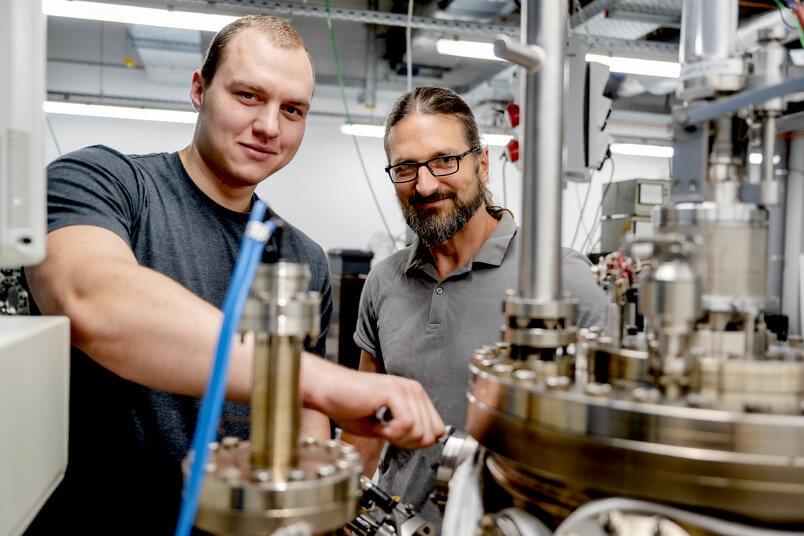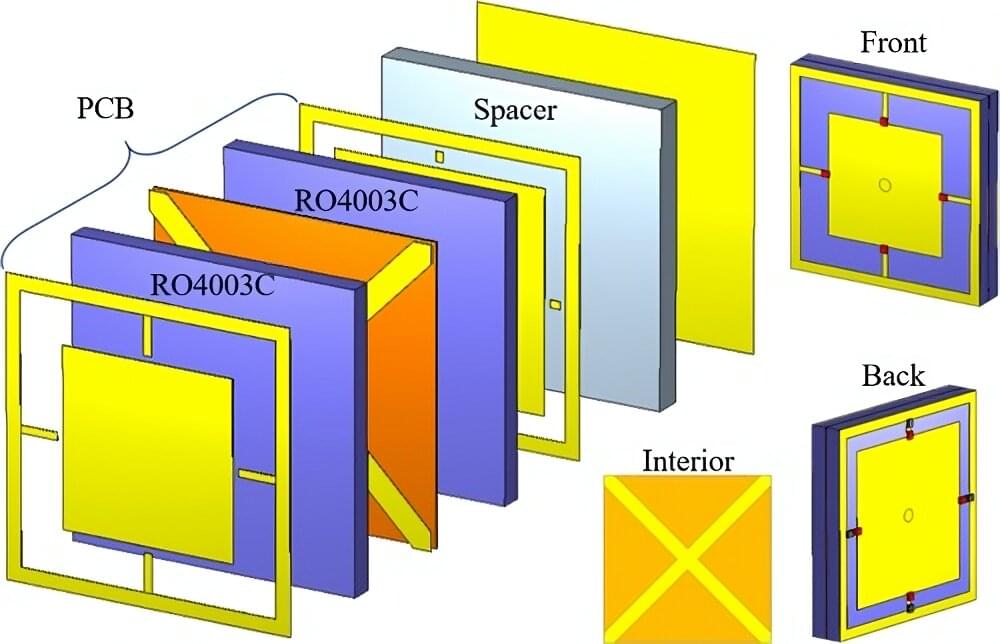In some deep subterranean aquifers, cells have a chemical trick for making oxygen that could sustain whole underground ecosystems.



Researchers have created a quantum superposition state in a semiconductor nanostructure that might serve as a basis for quantum computing. The trick: two optical laser pulses that act as a single terahertz laser pulse.
A German-Chinese research team has successfully created a quantum bit in a semiconductor nanostructure. Using a special energy transition, the researchers created a superposition state in a quantum dot—a tiny area of the semiconductor—in which an electron hole simultaneously possessed two different energy levels. Such superposition states are fundamental for quantum computing.
However, excitation of the state would require a large-scale free-electron laser that can emit light in the terahertz range. Additionally, this wavelength is too long to focus the beam on the tiny quantum dot. The German-Chinese team has now achieved the excitation with two finely tuned short-wavelength optical laser pulses.

Cities can be obstacle courses for communications signals. A radio signal must travel from a cell phone to a router to a cell tower, and onward to its recipient—all while bouncing between walls, buildings and other structures. When it hits an obstacle, the radio wave gets scattered, diminishing the signal. This in turn reduces the bandwidth. At the same time, the signal must compete with the bandwidth needs of numerous other devices in the area. All this reduces the amount of information the signal can communicate.
Newly developed small, lightweight reflective surfaces could revolutionize communications in crowded environments by providing unprecedented control over electromagnetic signals, like radio waves.
Historically, engineers have used repeaters—electronic devices that receive a signal and retransmit it—to help these communications signals cover longer distances and get around obstacles, but this technology is reaching its limits. Now, engineers are looking to modify the behavior of the communications signal itself. Enter reconfigurable intelligent surfaces (RIS).

Just last week, the US Department of Agriculture gave the green light to two companies to make and sell their cultivated chicken products in the US. This is a major moment for the field—even if a lot of milestones are left ahead. In a stroke of luck, this week I’m at a conference called Future Food Tech, where people are talking about the biggest news and challenges for alternative proteins of all types. So for the newsletter this week, let’s check in on the world of lab-grown meat.
Reaching commercial production won’t be easy.

Materials that are both strong and lightweight could improve everything from cars to body armor. But usually, the two qualities are mutually exclusive. Now, University of Connecticut researchers and colleagues have developed an extraordinarily strong, lightweight material using two unlikely building blocks: DNA and glass.
“For the given density, our material is the strongest known,” says Seok-Woo Lee, a materials scientist at UConn. Lee and colleagues from UConn, Columbia University, and Brookhaven National Lab reported the details on July 19 in Cell Reports Physical Science.
Strength is relative. Iron, for example, can take seven tons of pressure per square centimeter. But it’s also very dense and heavy, weighing 7.8 grams/cubic centimeter. Other metals, such as titanium, are stronger and lighter than iron. And certain alloys combining multiple elements are even stronger. Strong, lightweight materials have allowed for lightweight body armor, better medical devices and made safer, faster cars and airplanes.




“We really didn’t know which way it would go,” he said.
To find out, the researchers generated versions of the enzymes that would specifically move into the nucleus and bypass the mitochondria. They discovered that this relocation fortified the cells, keeping them alive. They demonstrated that this process worked in both heart cells generated from human stem cells and in mice exposed to chemotherapy.
“This seems to be a new mechanism by which heart cells can defend themselves against chemotherapy damage,” noted Rehman, who is also a member of the University of Illinois Cancer Center.

The earlier that Alzheimer’s disease and other similar conditions can be spotted, the better the treatment options are, and scientists have discovered a blood biomarker that could signal the risk of dementia many years in advance.
A team from the National Institute on Aging, the University of Texas, and the Johns Hopkins Bloomberg School of Public Health in the US, as well as other institutions across the world, looked at data on 10,981 individuals collected across the course of 25 years.
In particular, the researchers analyzed the proteome of these individuals: the complete set of proteins expressed in a body, driving all kinds of biological processes from cell communication to hormone levels.